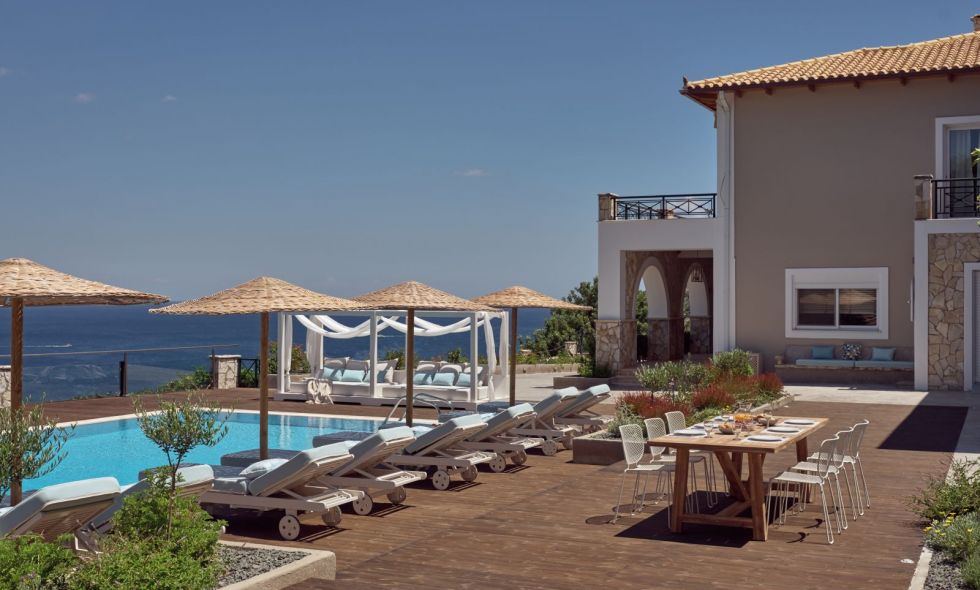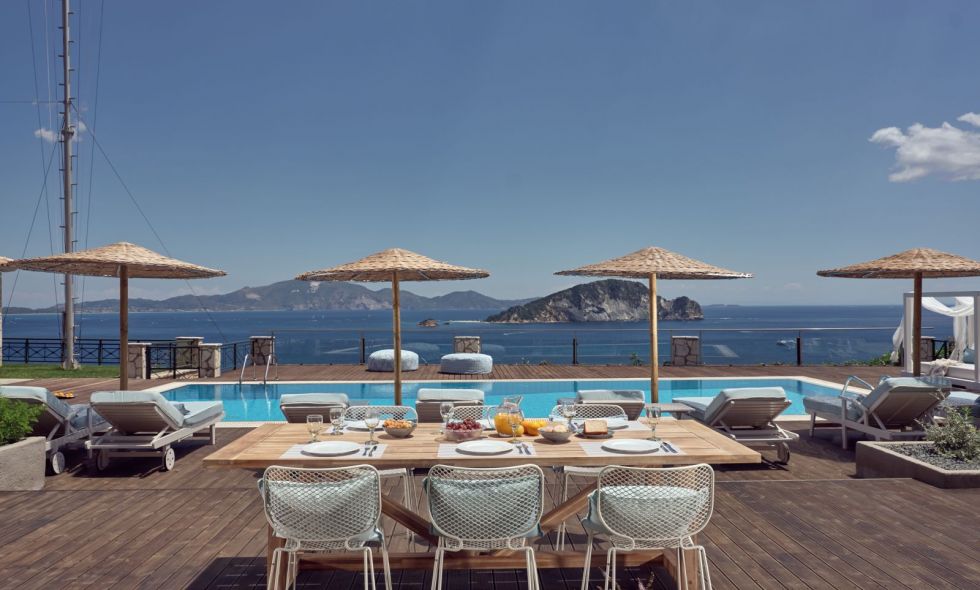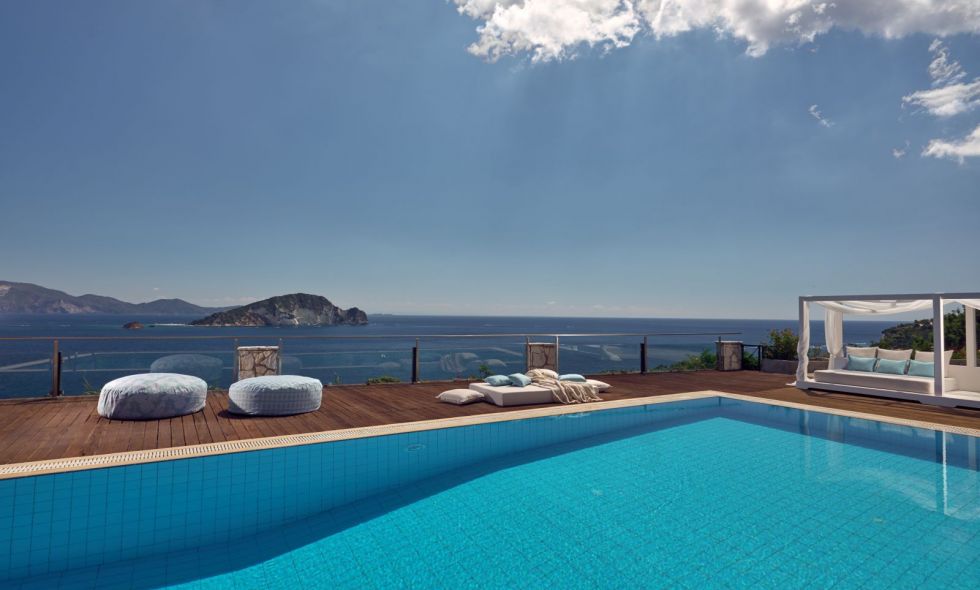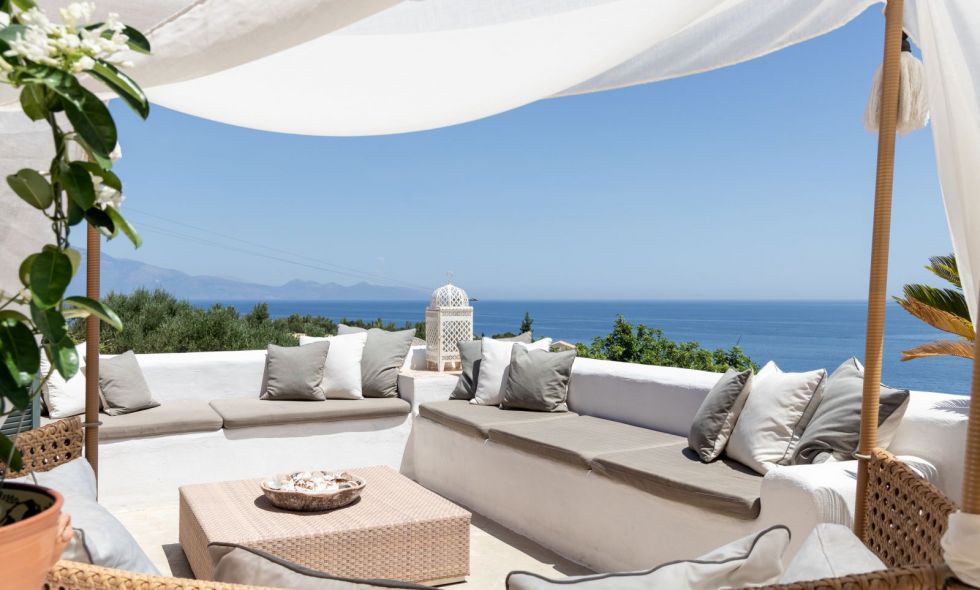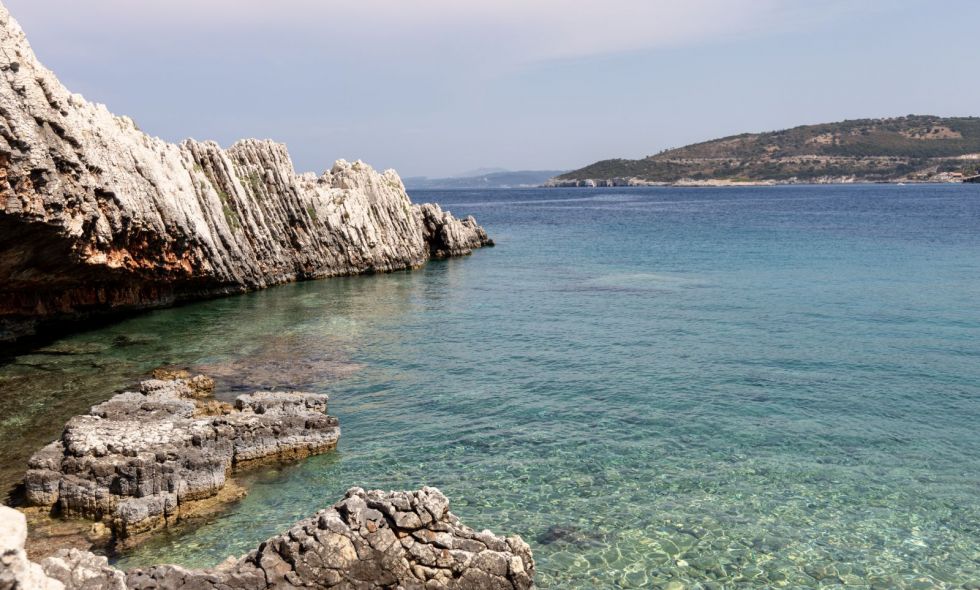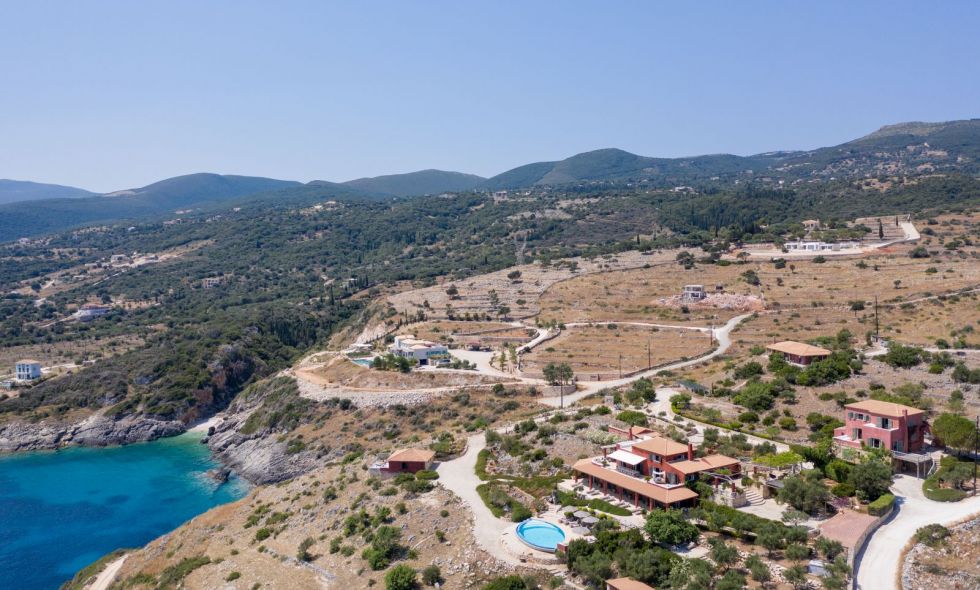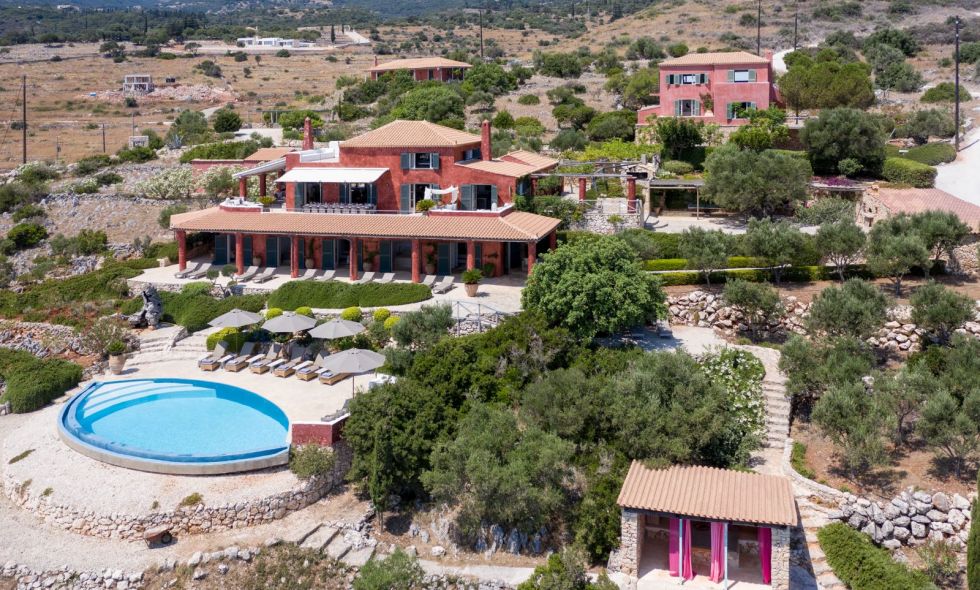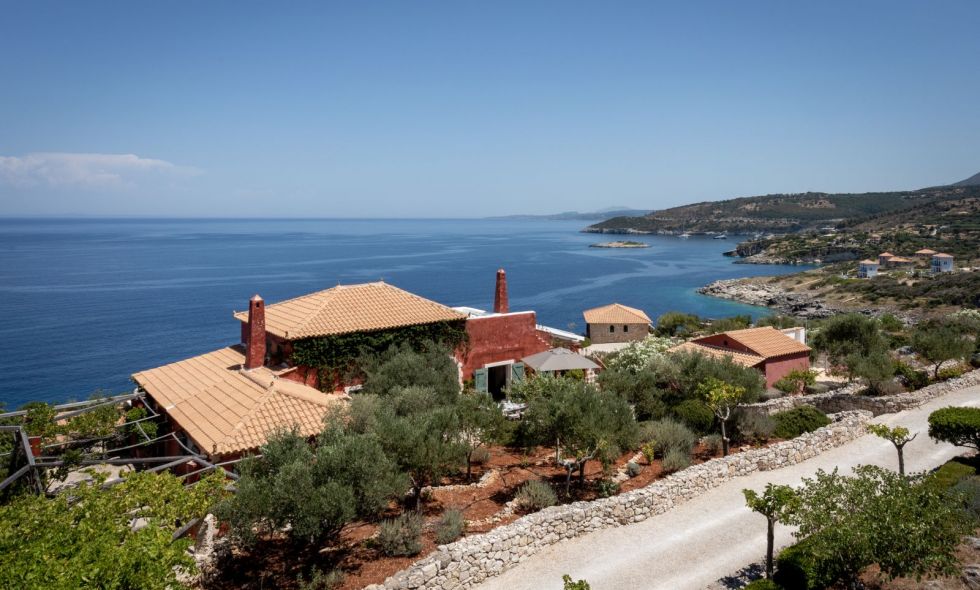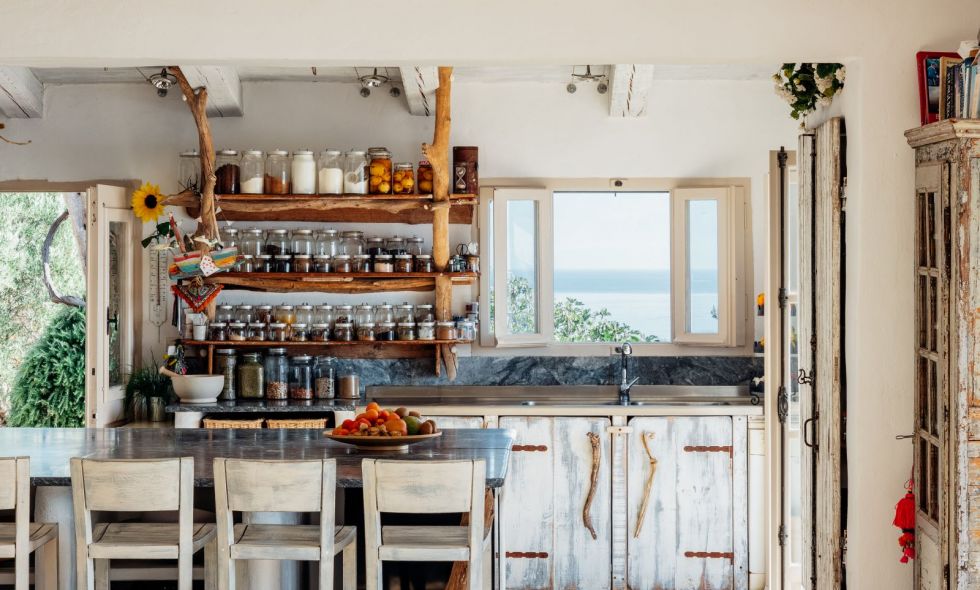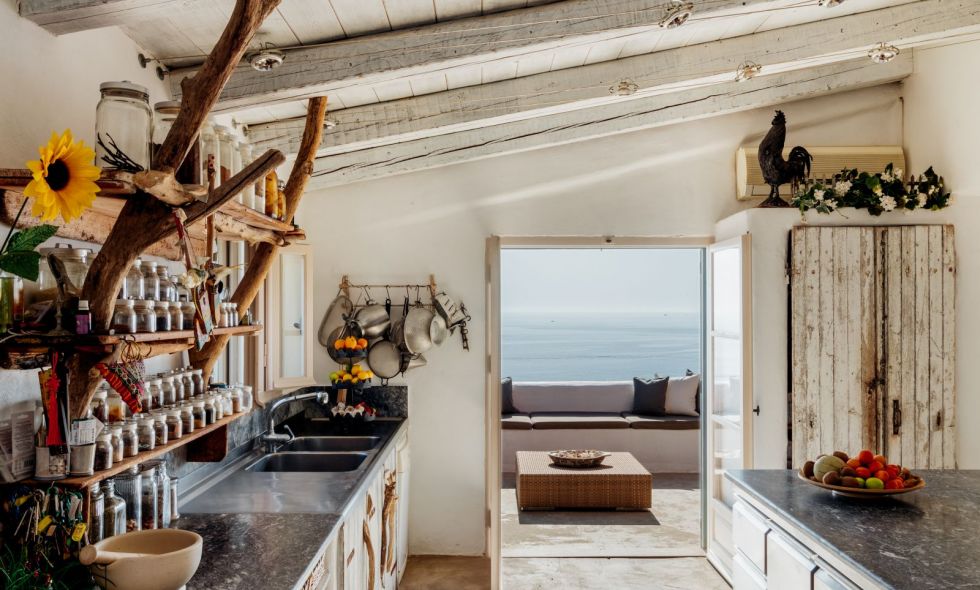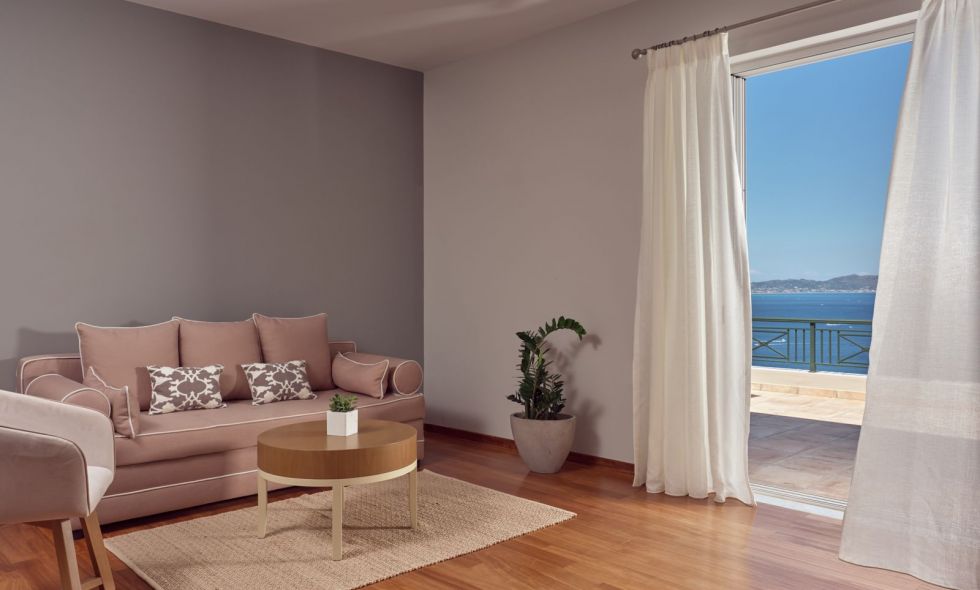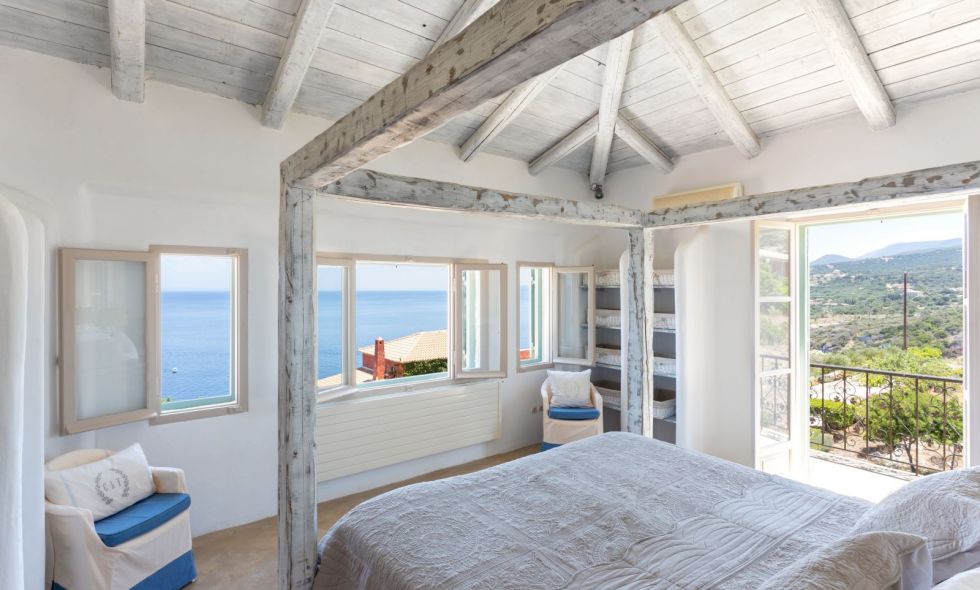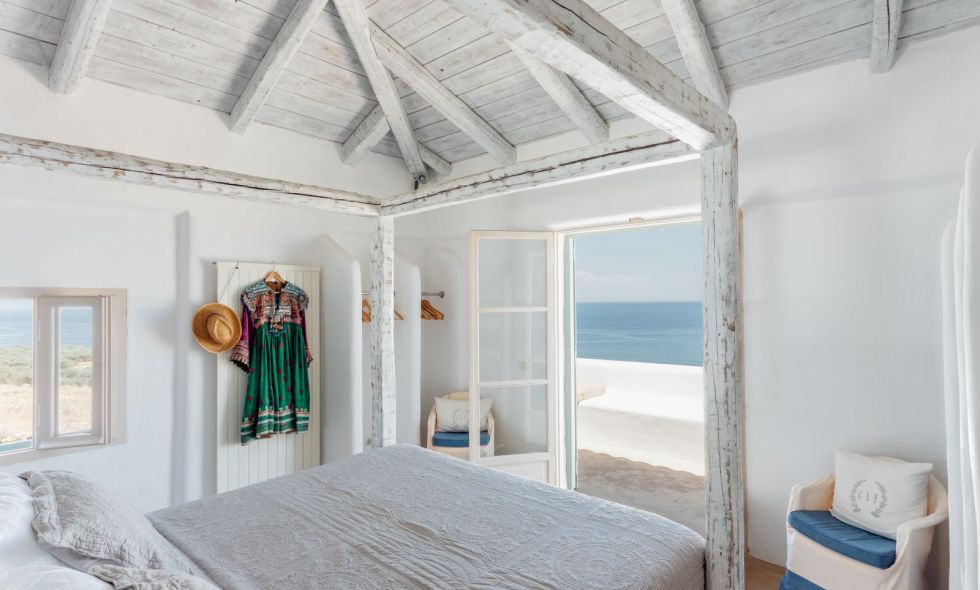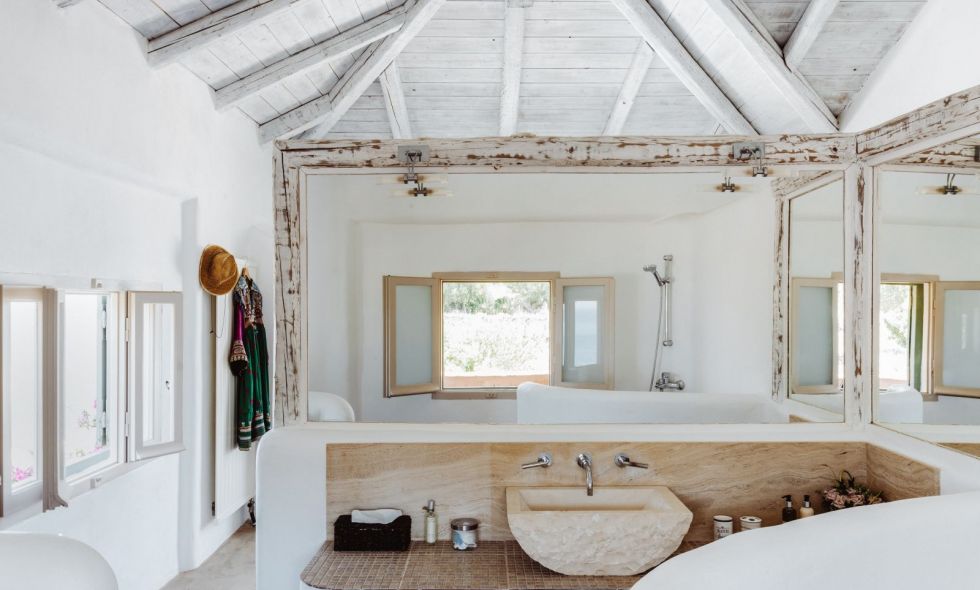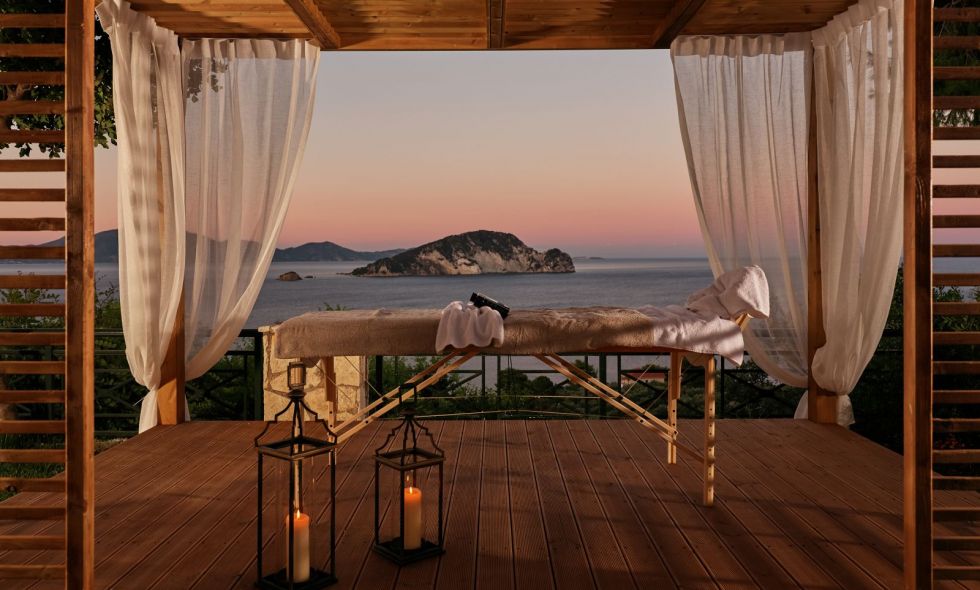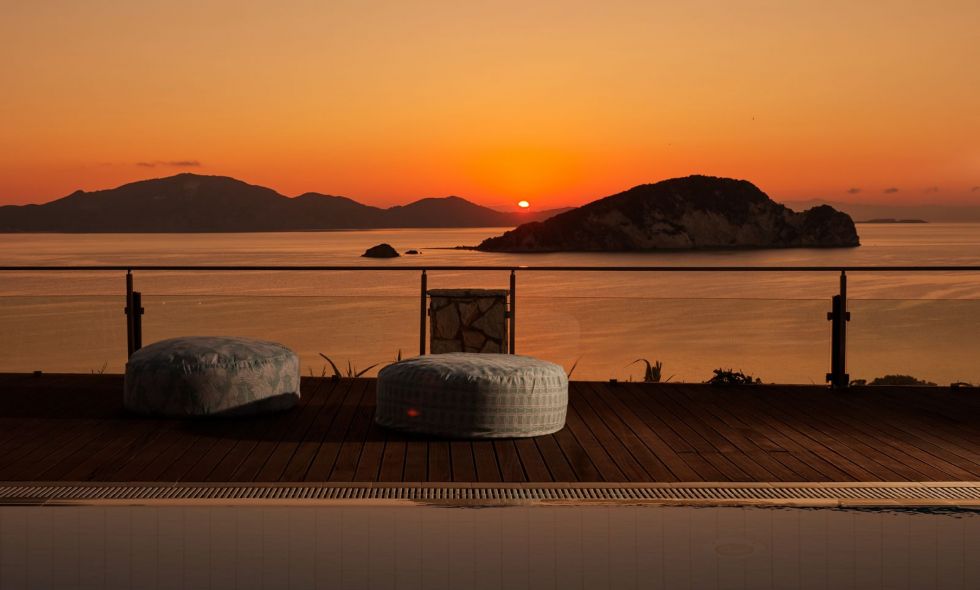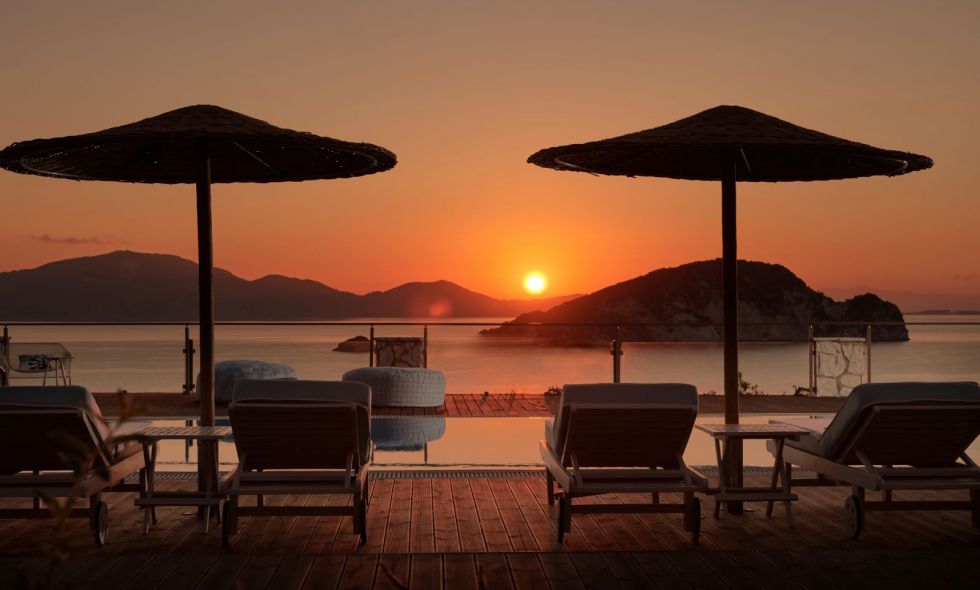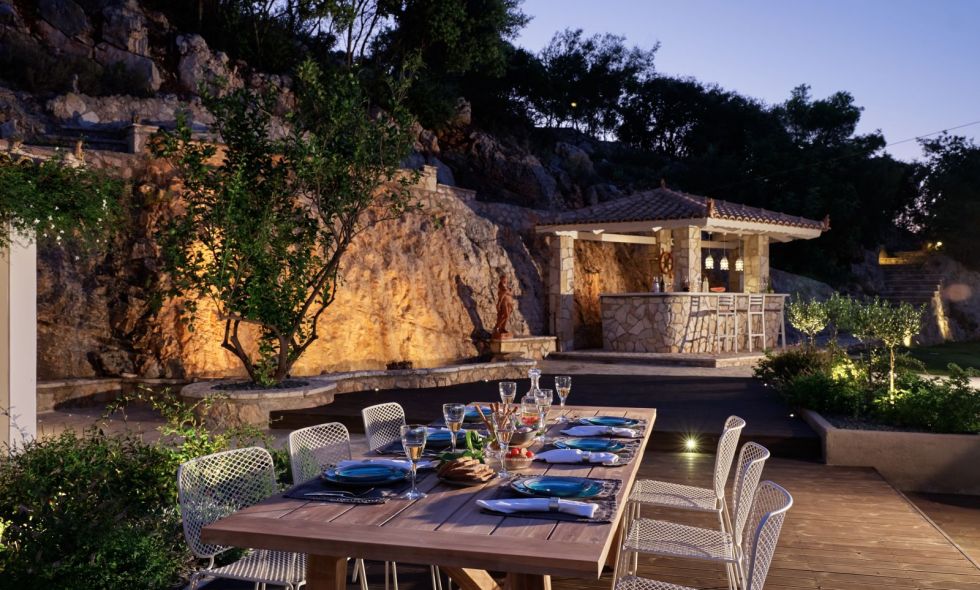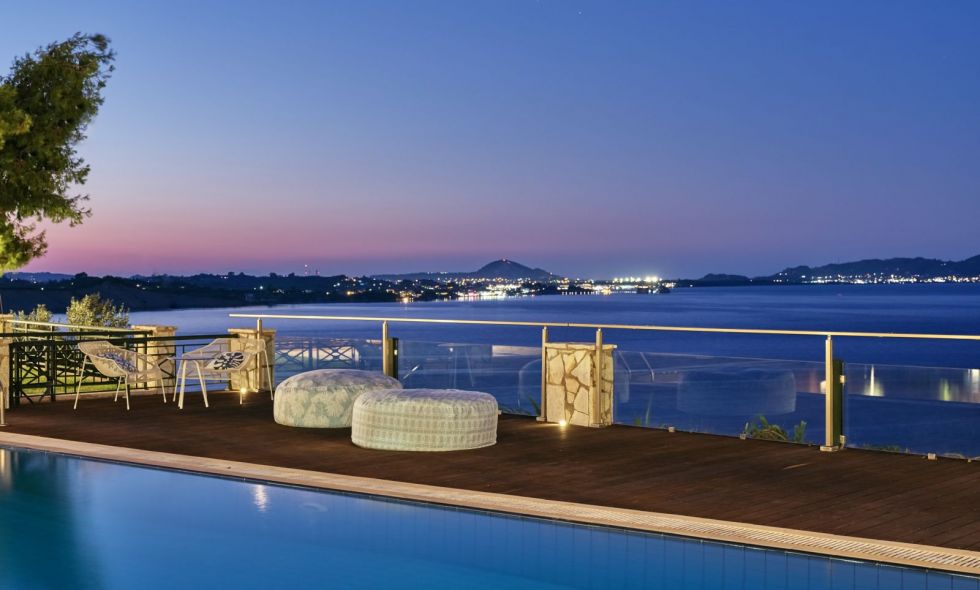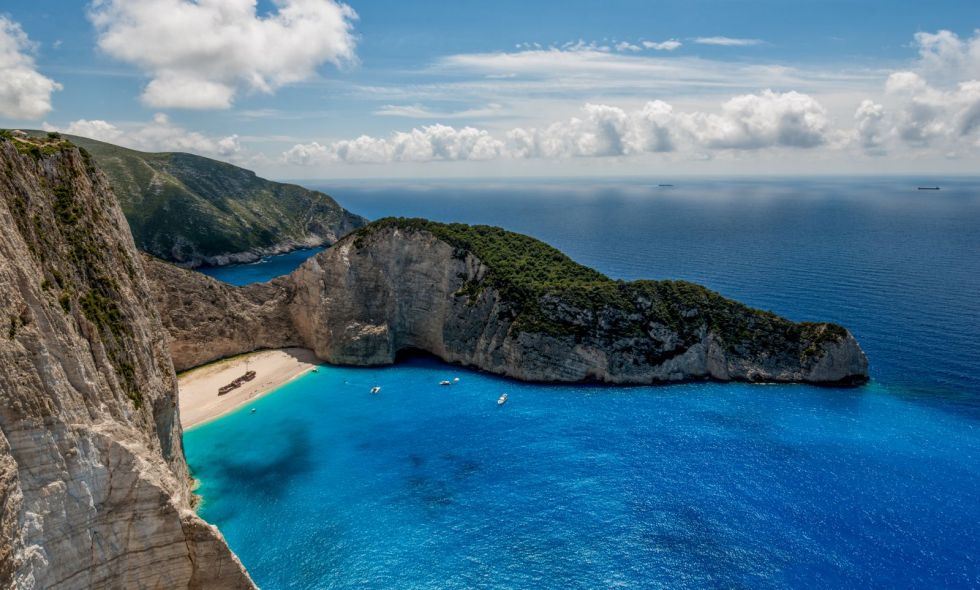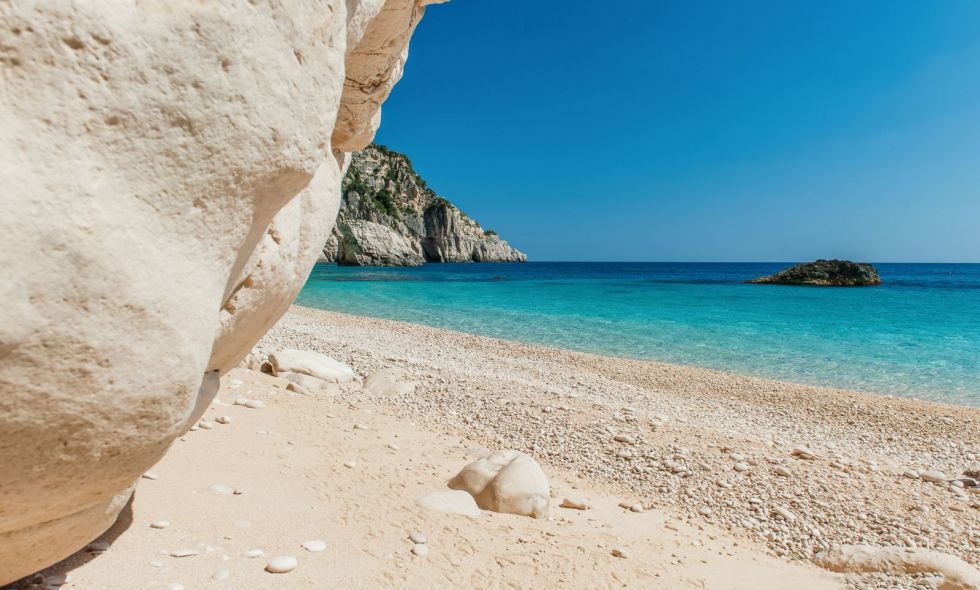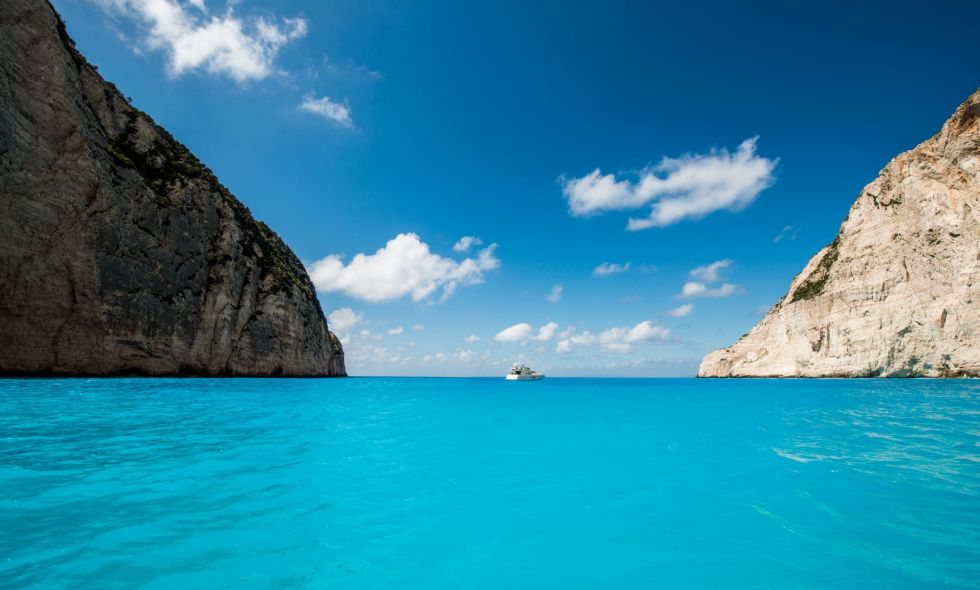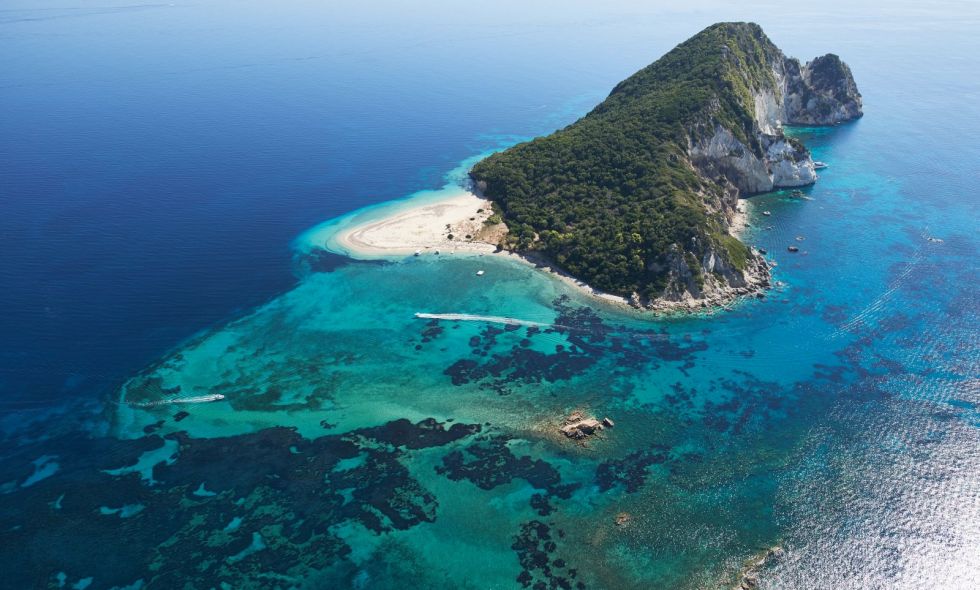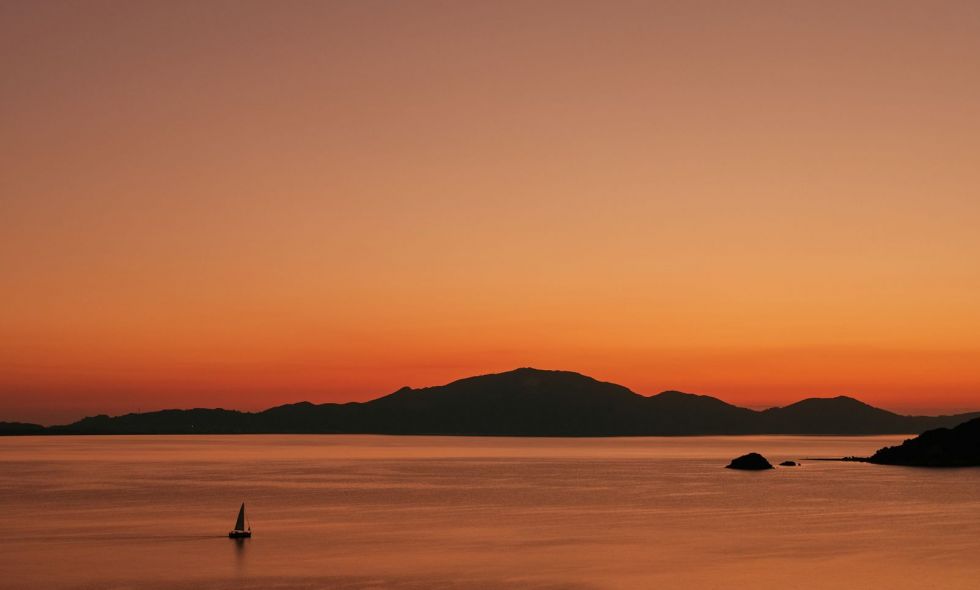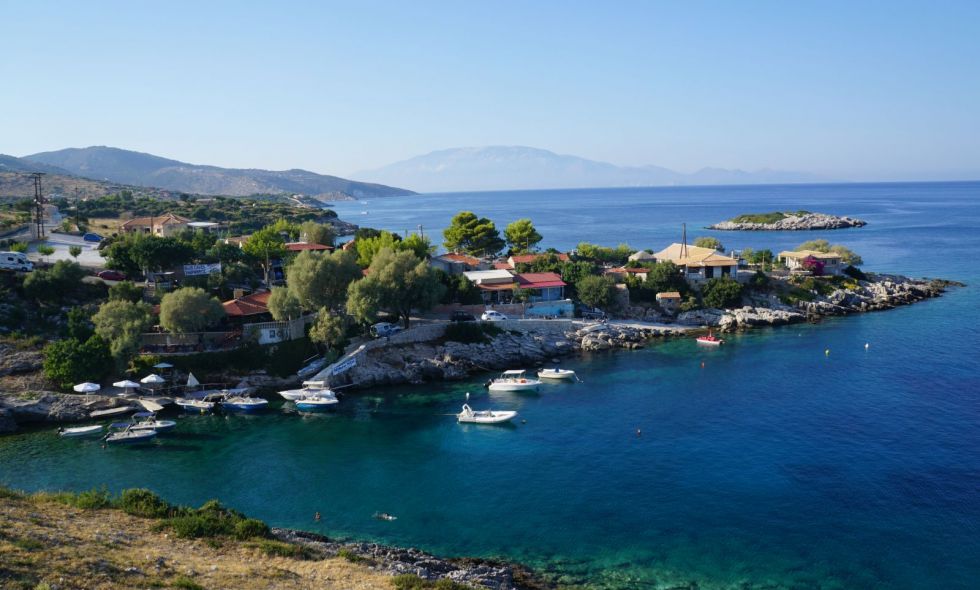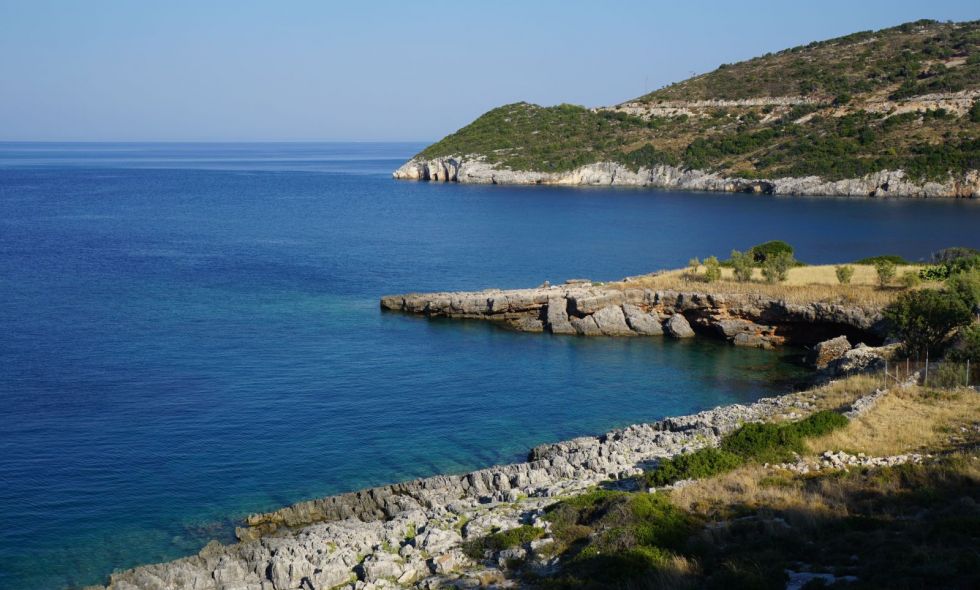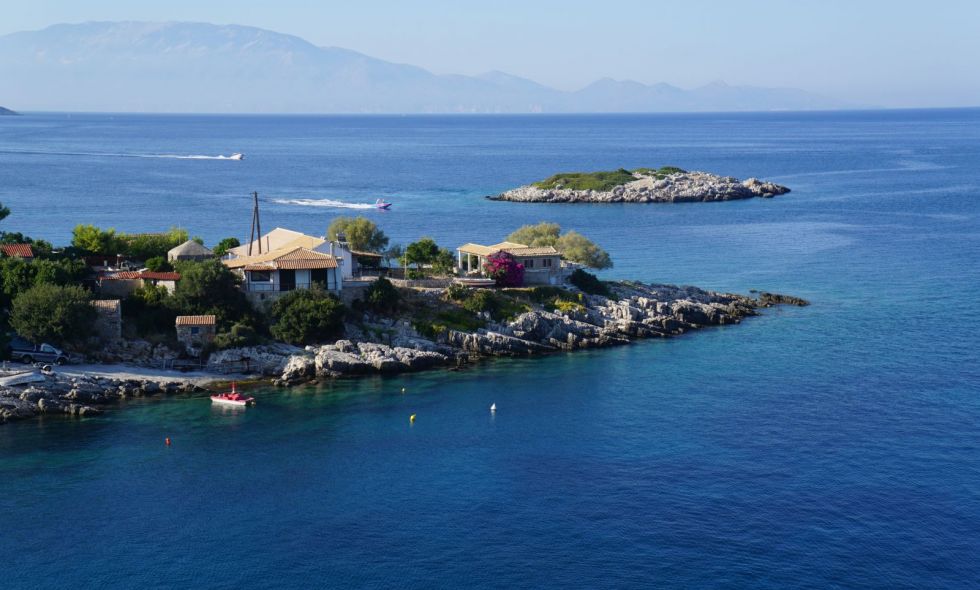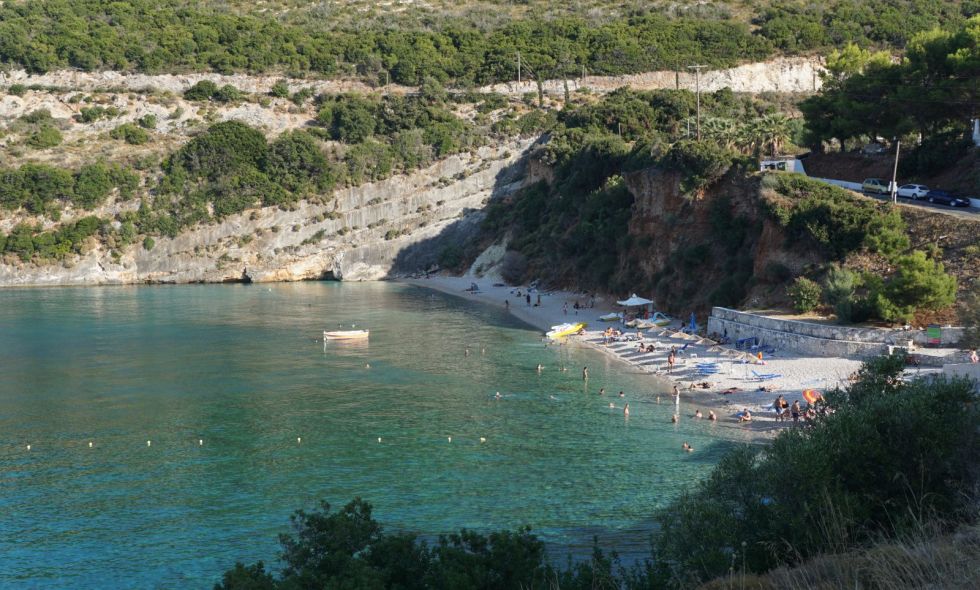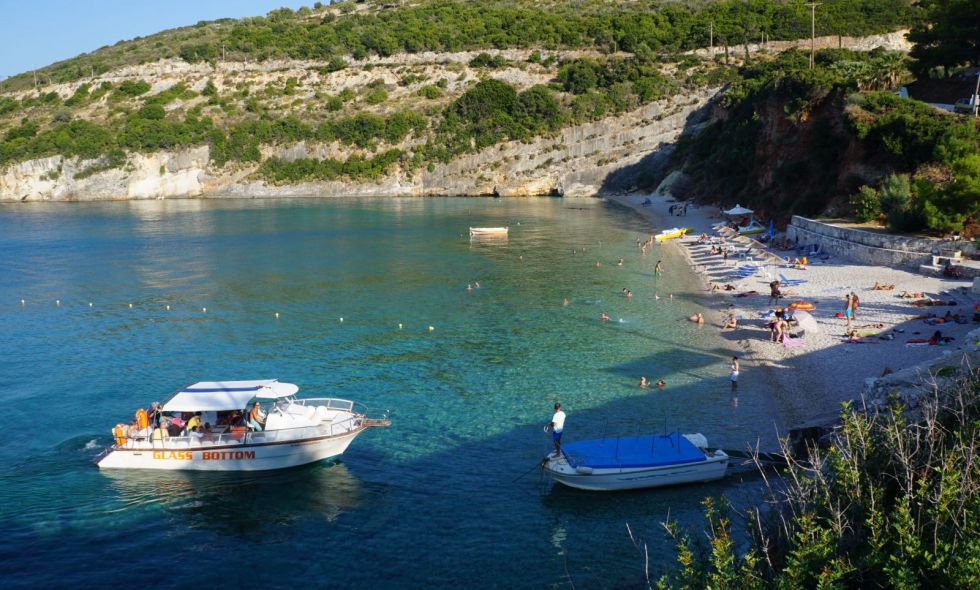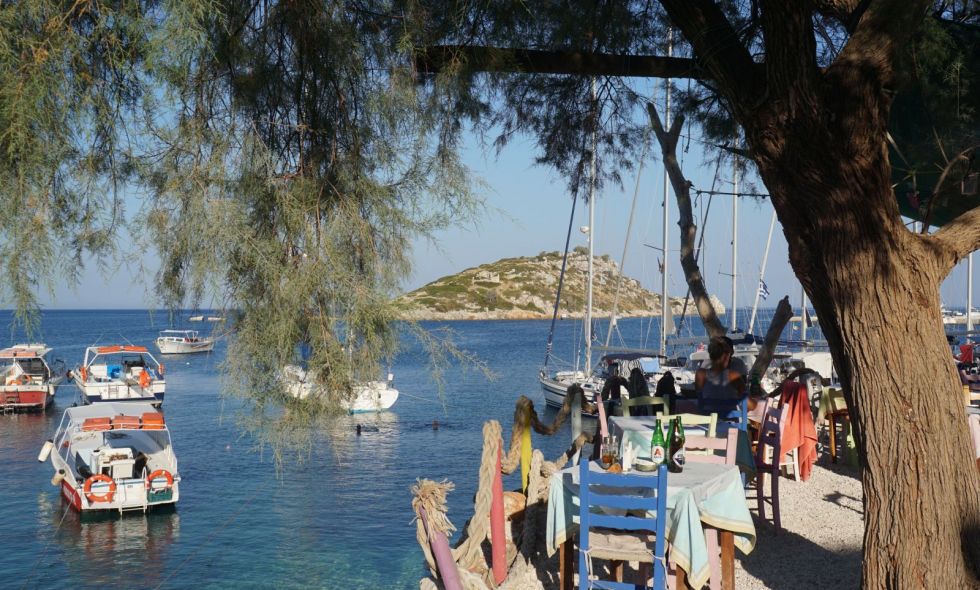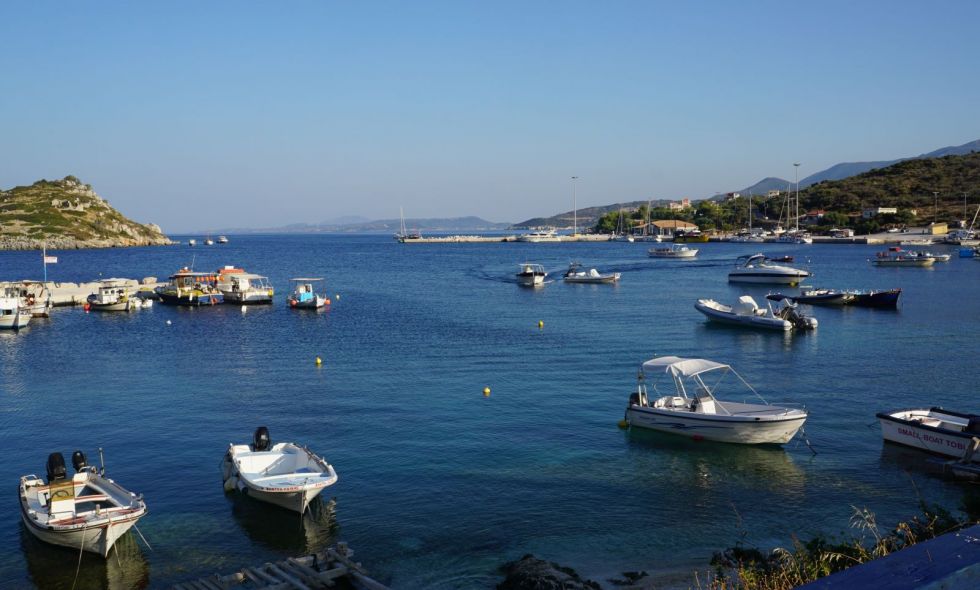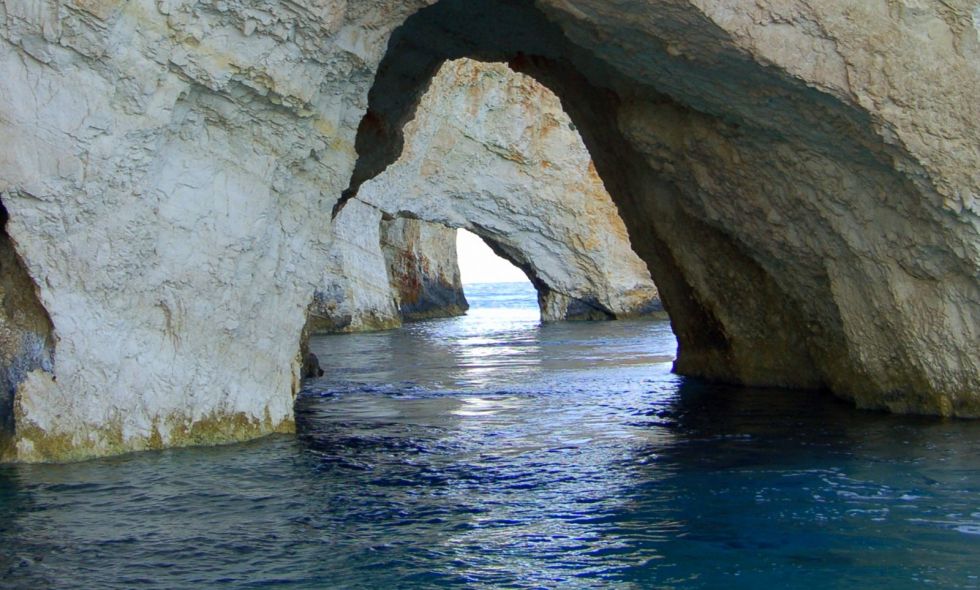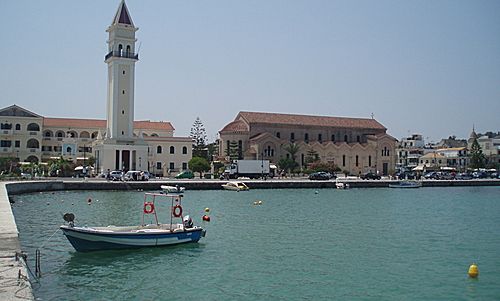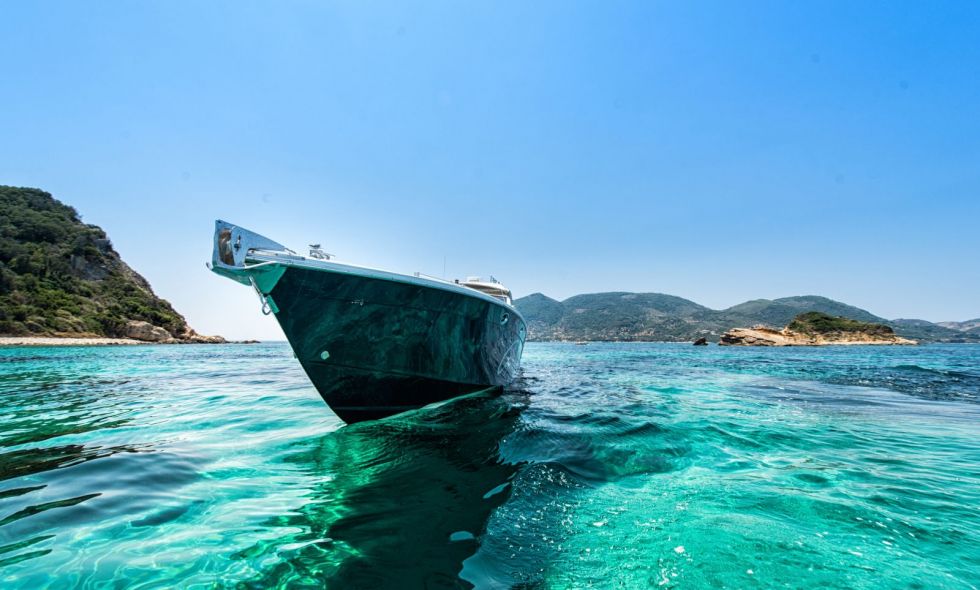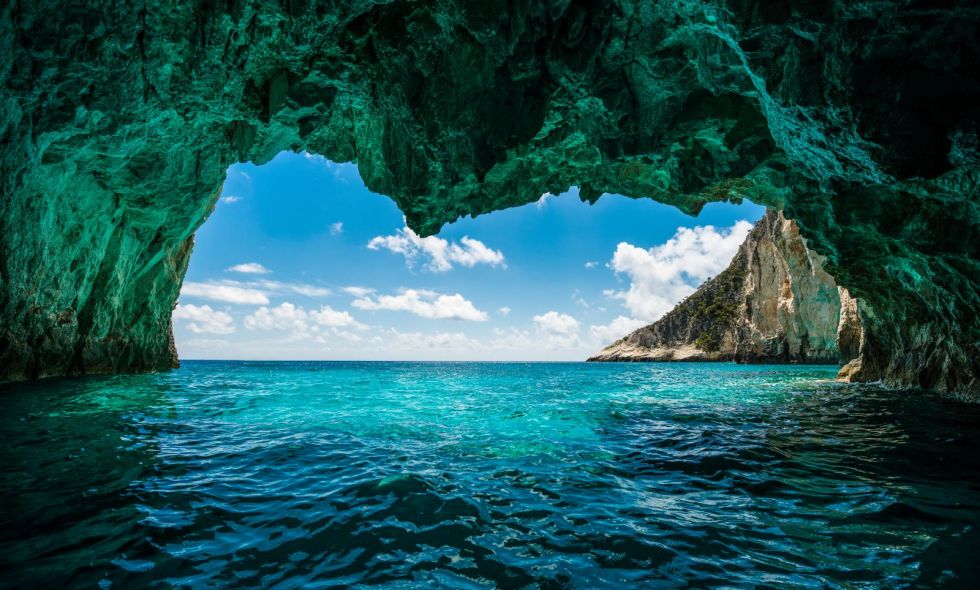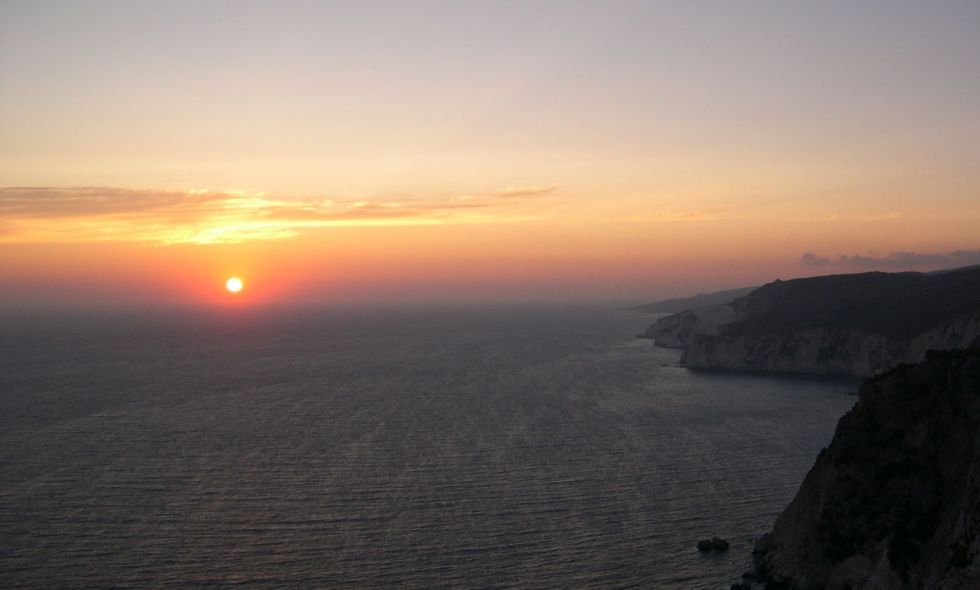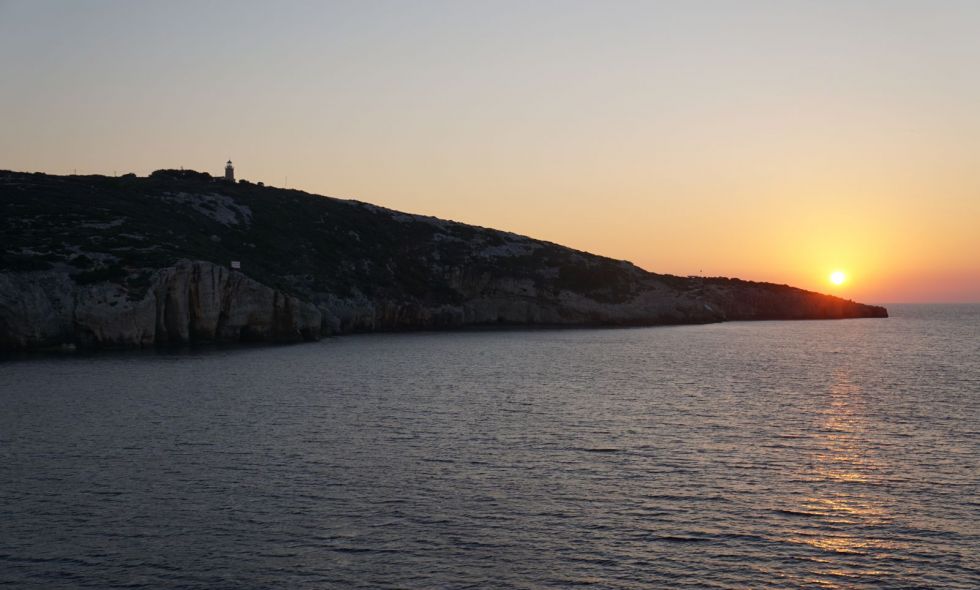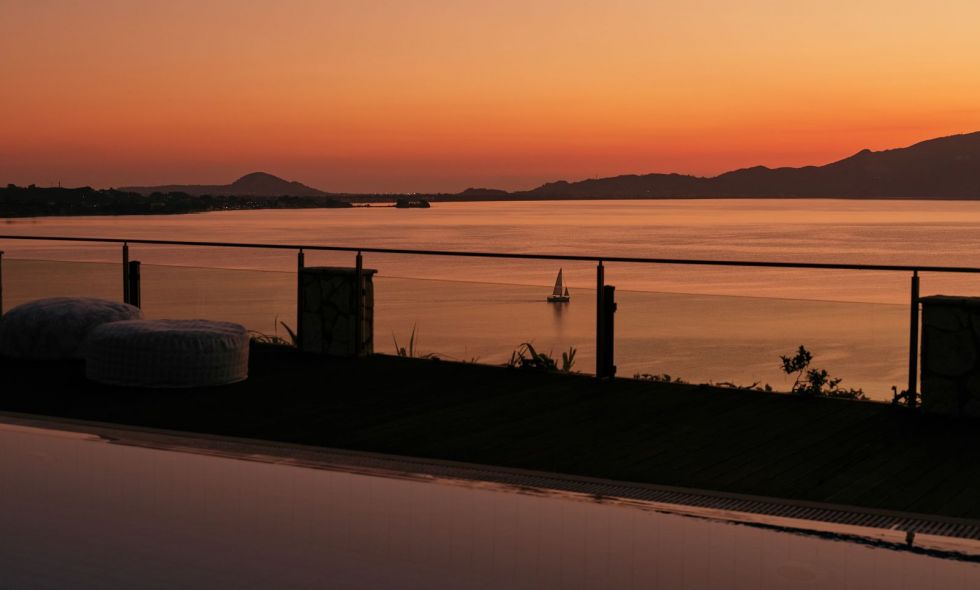Zakinthos is best known for its iconically beautiful Shipwreck Beach, the blue grottoes and coves of the northern end, and its long sandy beaches in the south. It is a great family holiday choice as it is easy to get to, large and offers a wider variety of activities.
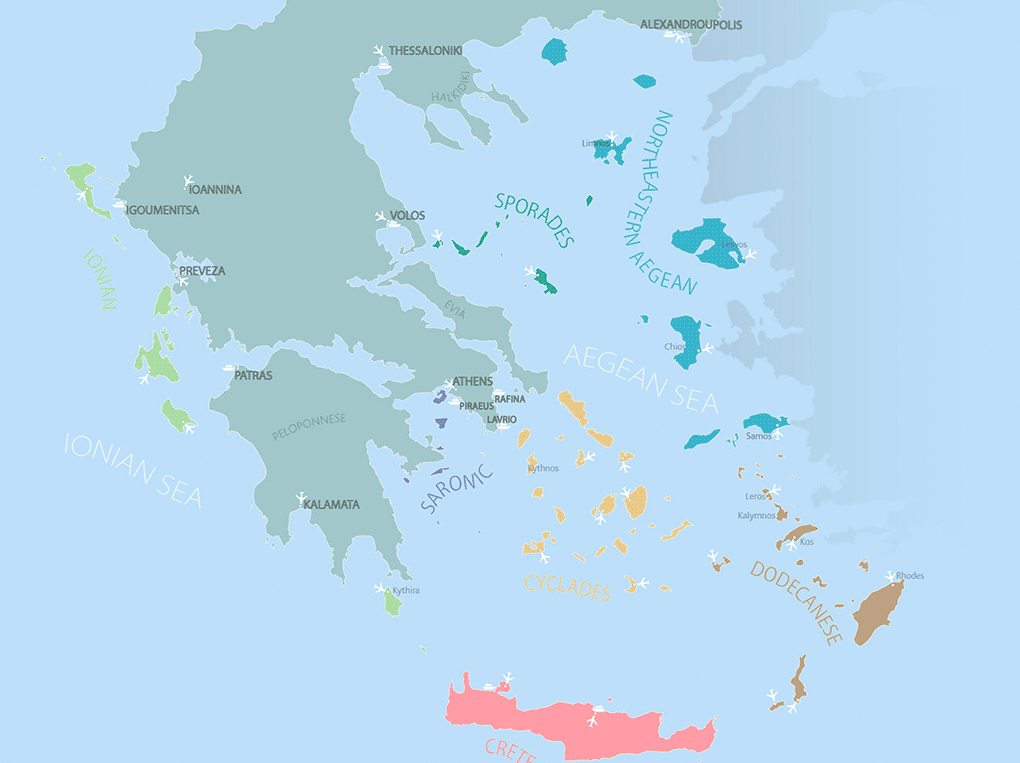
View Map
Zakynthos Portrait
“Tonight I decorated my guitar with ribbons and took a walk in the lanes for the beautiful girls”, Zakynthos cantada.
1953’s earthquake abruptly severed this gorgeous garden island’s historic continuity and the beauty that led to the Venetian overlords name for it of Fiore di Levante (The Flower of the Levant). One of the most artistically and intellectually advanced and Europeanized places in Greece, Zante was a place of theatres, concerts, masked balls, receptions, political activists and academies. Looking at the brilliance of what does remain in the churches and museums of Zakynthos, one can feel the loss.
The island has a split personality – in the south, where wide shallow sandy beaches fringe the entire coast, commercial tourist projects flourish with 24-hour intensity and are best avoided, though teenagers will want to go there at least once – but probably only once.
Go north however, and you will find life as it is lived away from the tourists. Ancient villages, springs and ruined Venetian manor houses and estates, impressive pre-earthquake architecture set in beautiful arable uplands, olives and orchards. Many enterprising tavernas use their own local produce with everything from rabbits to tomatoes and huge sweet flat onions only found here, to melons and tiny wild strawberries. The oldest working winery in Greece, founded in 1638 and still run by the Comoutos family, organically produces the amber Verdea (it’s like drinking velvet) and you may visit it at Ktima Agria. It marries well with the rich casseroles local to the island. The island still produces currants for export, the black gold of Venetian overseers. With their trade, and that of textiles, ceramics, olive-oil-based soap, the famous nougat, sausages, wine, liquorice root and beeswax to places as far flung as Russia, England, Germany and Asia Minor, merchants became both wealthy and organised.
These civili or bourgeoisie hated both oppressor and the local landowning arrogant nobili, and in time the Venetians left. The British rule had some practical legacies – in the road system (still used today), bridges, sea-walls, restoration of churches and mansions around the island. Visit the estate and mansion of the Loundis family at Sarakina (its chapel still functions) to have some idea of the grandeur of the family’s parkland and (pre-1953) working estate for raisin production, as well as the beauty of its Venetian red walls and green shutters. There are still peacocks strutting about!
Zakynthos is also famous for its musical heritage – the ever-popular cantades are songs for four voices in harmony, accompanied by guitar and mandolin, unique to the island – although Cephalonians would dispute this! They are a hybrid of Italian bel canto and Cretan folk style from the island’s influx of refugees in 1669, mostly romantic and often comic. You will find them sung in many local tavernas and at weddings and family celebrations.
The Northern coast is where the independent traveler will tend to base himself, around the unspoilt village of Aghios Nikolaos, where most of the good rental villas are, and a sailing club that serves the ex-pat community here. Breathtaking white sand beaches with fluorescent blue water under towering white limestone cliffs – Shipwreck Beach is one of the world’s most photographed beaches, accessible only by boat. Strings of blue grottoes line the coast, seals and turtles can be seen in the waters, and the swells from Italy pound the near empty beaches in peace. The southerly Vassilikos peninsular has beautiful countryside and the exquisite beach of Gerakas, plus some very chilled beach bars with a hip vibe in the evening.
The tiny hilltop hamlet of Kambi, surrounded by olives and vines and a Mycenaean tomb, has the best view of the sunset, across islets where sea-birds breed and seals bask.
BEST FOR
Huge variety of beach life, from the hip and chilled beach bars of the Vassilikos area – Gerakas, Porto Roma and Aghios Nicholaos, to wild cliff-girt strands of the west coast. Calm Ionian seas that offer perfect swimming and boating opportunities, beautiful sunset views from cliffs, the unspoilt beaches and caves of the north.
The churches and Museums of Zakynthos town, easy access via its international airport. The famous turtle beaches of the South, where turtles compete with sunbathers for space to lay their eggs – an annual occurrence.
WORST FOR
Undistinguished post-earthquake architecture, the many boat trips to sea caves or famously photographed beaches, provincial feel to the town. The 24-hour tourist strip at Laganas.
WOULD SUIT
Families with children needing a huge variety of entertainment and activities, pottering in small boats, scuba lessons, cave visits, and other water activities.
Arts-and-letters buffs. There are wonderful icons of the Ionian School – influenced by the Italian Renaissance and breaking the severe Byzantine tradition – which were saved from all over the island from the 1953 quake in the Museum of Post-Byzantine Art. Dionysios Solomos, the internationally-acclaimed father of modern Greek poetry, wrote his Hymn to Freedom in 1823, which became the National Anthem of the New Greece.
Naturalists. There are rare sea-lilies, peonies, and orchids. Both here and the Strophades islets (20 miles south of Zakynthos) are stopover points for migratory birds to and from Africa. (Owls, egrets, swans, pelicans, peregrine & eleonora falcons, cormorants and even sparrows!) There are hedgehogs and pine-martens, and of course the caretta-caretta loggerhead sea turtle and the monk seal – both very endangered species. Human intervention and thoughtless exploitation have vastly reduced their numbers, despite the creation of a Marine Park (its caveats sadly often ignored by business greed).
WOULD NOT SUIT
Those wanting the pure style of a Cycladic island, who would be upset at the scenes of sun-grilled northern Europeans on charter flights at the airport.
DON’T MISS
A trip to the Strophades islets where there is a fortress/monastery with canon embrasures for defence against pirates, one remaining monk, a lighthouse with a beam visible for 18 miles, a rest stop for thousands of migrating birds, rare plant species and a unique cedar forest.
Lunch in a fish tavern in Mikro Nissi, a ridiculously picturesque little fishing hamlet on the north east coast, spectacular boat trips to the blue grottoes and beaches on the west coast from Porto Vromi. The sulphurous underwater springs at Makri Gialos beach, sunset from the cliffs above Keri down in the south.
The Stone Park, a nature and lifestyle trail for children, the Byzantine Museum in town, the folklore Museum in Vassilikos.
An evening of cantades. Try the Arekia Taverna in town, or Alizerini at Kiliomeno or Malanos, just outside of town, where locals love it. The inevitable astounding Shipwreck Beach, only accessible by boat.
The star beach of Gerakas, a crescent of golden sand at the very tip of the Vassilikos peninsular, which is also a turtle-breeding ground and off limits between dusk and dawn. The tiny mountain village of Loucha.
ACTIVITIES
Scuba diving (excellent Padi centre on Laganas Beach and some spectacular underwater landscapes in the Marine Nature reserve at Keri), kite-surfing, wind-surfing, boards, bananas, donuts, dinghy sailing, tennis, winery visits, hiking trails, boat trips (Marathonissi is a tiny uninhabited and protected Caribbean islet in Laganas Bay). Boats for Blue Cave/Shipwreck depart from Agios Nikolas, which also has a ferry run to Cephalonia. Big variety of nightlife.
HIGH SEASON
Airport jams and hordes of people. An unreliable public transport system, which doesn’t decently serve the west and north. You need pre-booked wheels.
LOW SEASON
An amazingly fine embroidery of wild flowers envelops the entire island in spring, and again after the first autumn rains there flower cyclamens, sternbergias, orchids, wild pink gladioli and lilies. Il Fiore di Levante! Try countryside tavernas after explorative hikes. To Faros at Cape Skinari (with amazing views from this lighthouse position), the little taverna at Limnionas’ tiny bay where the swimming is divine under the impressive rocky cliffs with wheeling seabirds above deep blue sea.
We do not show villa details on our site to protect the exclusivity of our owners’ properties. We offer a unique personal service to locate the perfect villa or yacht for you – to see villa details and get our expert guidance and insight please get in touch.
Our Villas in Zakynthos
Read about our villasSimilar to Corfu, the popular villas tend to be stone built in a vaguely Italianate style. Waterfront access is a huge plus but hard to find.

